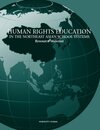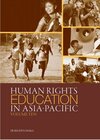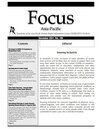What do people, many of whom likely unfamiliar with the words, imagine when they hear “pregnancy conflicts?” Perhaps they think of conflicts of “having or not having” or “raising or not raising” a child.
Piccolare was established in Tokyo as a non-governmental organization with a mission: to stand by and extend support to all women and girls who are in trouble or unsure of what to do with their pregnancy. The word “piccolare” was created by combining the words piko (navel, center or core in Hawaiian) and coccolare (to cuddle, to treat with great care in Italian). The name of the organization reflects its mission.
To the young women and girls, the “conflicts” they bring to Piccolare are matters of life or death such as “I will lose my job, if they find out about my pregnancy,” “I will lose the place where I stay,”“I want to go to the hospital, but I cannot afford to,” or “Is there any hospital that would accept me?”
In this society, there are “pregnancy conflicts” arising from fear of losing employment or places to live or being deprived of the life they have been barely maintaining. The pregnant women and girls who have these problems are mostly young, between ten to twenty years old.
A nineteen-year-old pregnant woman, calling herself “Stray Pregnant Woman” who worked six to seven days a week as a day worker and stayed at an internet café at night, spoke of her fear of being refused by hospitals. A twenty-two-year old pregnant woman contacted Piccolare during winter while trying to keep warm by staying close to a vending machine in a park. She suffered violence from a man she turned to for help. An eighteen-year-old feared that she might end up not being able to contact anyone because she could no longer pay the phone fee for her smartphone.
Women and girls who worry about their pregnancy and yet unable to consult anyone and bear the “conflicts” within them are not few. And they are not in distant and unknown places but are somewhere nearby.
Death from Abuse and Teenage Pregnancies
Government reports show that, among cases of death of infants due to abuse, the proportion of teenage mothers is significantly high. The proportion of these teenage mothers in the total number of births is stable at around 1.3 percent, while the rate of pregnancy among youth involved in cases of infant death due to abuse is at 17 percent (excluding death in collective suicides).1 Many deaths of infants due to abuse happen on the day they were born, with fourteen cases out of fifty-two reported cases.2 Of the fourteen cases, eleven infants were abused by their own mothers, seven of whom were twenty-four years old or younger. And in all cases, the mothers gave birth not in a medical facility but in the toilet or bathroom at home.
Approximately 90 percent have not been issued the Mother and Child Health Handbook, or received pre-natal health checkups.3 The deaths can be seen as the result of women and girls giving birth alone, unable to reach out to anyone.
Imagining Giving Birth Alone
Giving birth at the risk of one’s own life must have been a frightening experience.
The 2017 government report states that “The feeling of not wanting anyone to know about this [pregnancy] was stronger than the feeling of wanting to help the baby.” These words express the degree of their desperation.
If someone found out their pregnancy, they might completely lose their livelihood.
Are These Women and Girls the Abusers?
Why did they have to give birth at home on their own? Why did not anybody notice their pregnancy? Why did they have to continue their pregnancy?
Perhaps they would not have ended up as abusers if the methods of contraception were affordable and available, if they did not have to pay for the cost of giving birth, if the society had in place mechanisms that would prevent the isolation of the pregnant women and girls.
I hope that we will be more aware that it is this society that is the real abuser that caused the deaths of the children.
Pregnancies: Responsibility of the Women and Girls Alone?
Pregnant because of enjo kosai (being paid for dates), a twenty-year old woman began suffering morning sickness and was unable to earn a living. She started staying at her acquaintances’ homes, one after the other. By the time she approached Piccolare, the only thing she had eaten or drank for five days was orange juice. She was about to leave the place she was staying in for a few days. When we picked her up from the place, her lips were cracked and she could barely sit up.
Piccolare is often consulted by “drifting” pregnant young women and girls who have no place to stay and move from home to home of friends or acquaintances who are not their partners, as well as by teenage girls who may fall into such situation. Without the pregnancy, they could have continued earning income and having a place to stay.
Behind most of these “drifting” women and girls are problems that they cannot solve by themselves such as poverty, abuse, domestic violence, other forms of violence, precarious employment, mental illness and various forms of social exclusion.
Many of the women and girls who managed to come to Piccolare had been unable to ask anyone for help. When people are continuously exposed to poverty, abuse, domestic violence and other forms of violence, they become uncertain on whether they are allowed to ask for help or not. That is why they have been managing on their own, despite numerous difficulties.
But since pregnancy is not a matter they can face on their own, they were forced to ask for help.
We greet each woman or girl with
Thank you for coming to consult us. From here on, let us think together with you about what to do next.
We listen to what they want to do and accompany them to local public offices and medical institutions to secure the necessary social welfare support and services while negotiating with them so that they can avoid suffering any disadvantages. We accompany them to local public offices and medical institutions to secure the necessary social welfare resources. When they are finally able to see a path to move forward, many of them would say, “I thought I was going to be scolded, but I was surprised that I was thanked and praised.” They thought they would be berated because they believed it was their fault that they became pregnant.
The initial contact with the “Stray Pregnant Woman” was through an e-mail message. When I read the words “Stray Pregnant Woman,” I could not forget how devastated I was thinking about the desperation and isolation she must have felt. In her e-mail she wrote that she saw on the internet that “stray pregnant women” were refused by hospitals, and this was all their fault. Even though she could not get pregnant on her own, she wrote that it was all her fault. Responsibility is rarely sought from the other party in the pregnancy, and instead placed on the pregnant women alone. These women and girls find themselves in such unreasonable situation.
Is pregnancy the responsibility of women and girls alone? Why do pregnant women and girls have to take responsibility for the pregnancies? And why are the abusers in infant deaths all mothers who gave birth to them?
You cannot get pregnant by yourself. Why is this simple truth forgotten in this society?
Irrationality of Stigmatization of Contraceptives and Abortion
There are other irrationalities involving “pregnancy conflicts.”
In Japan, access to contraception and abortion is extremely poor. A campaign to improve access to emergency contraceptive pills collected 67,000 signatures, which were submitted to the government with a letter requesting the improvement of access. I hope immediate action is taken on this matter.
Under the Maternal Health Act, abortion is allowed only for health or economic reasons and in cases of rape. In these cases, induced abortion is allowed to be performed by a designated doctor.4
This irrationality isolates the pregnant women and girls who suffer from inner conflicts, leads to the way the society looks at them and shuts them out.
Changing the Way the Pregnant Women and Girls are Viewed
In May 2020, Piccolare cooperated with another non-governmental organization, PIECES, to open a place called PISARA for young pregnant women and girls who have no place to go and are “drifting.”
A pregnant girl who did not get along with her mother and ran away repeatedly from home spent two restful days at the place. We sent her back to her home, telling her that she could come back to PISARA any time when things got difficult. But she stayed home, gave birth safely, is now raising her child and working towards becoming independent.
Just being able to know that you have a safe place to go any time you want, may empower you to live through the days.
If so, when society’s positive view of these women and girls inspires safety, they may find it easier to live, even when their circumstances are severe. For this purpose, it is necessary to make the problems of these women and girls known and visible to the public. Piccolare is currently preparing a “White Paper on Pregnancy Conflicts – from the consultation desk of Pregnancy SOS Tokyo” to be published in December 2020.
Kiyomi Matsushita is a Social Worker and a staffmember for Consultation Support and Board Member of Piccolare.
For further information, please contact: Kiyomi Matsushita, Piccolare, 2-6-14, Senkawa, Toshima-ku, Tokyo 171-0041 Japan; ph 050-3134-4479; e-mail: info@piccolare.org; https://piccolare.org/.
Endnotes
1 See 14th Report on the Deaths by Child Abuse, Special Committee on Child Abuse (in Japanese), August 2018, www.mhlw.go.jp/stf/seisakunitsuite/bunya/0000173329_00001.html.
2 See 15th Report on the Deaths by Child Abuse, Special Committee on Child Abuse (in Japanese), August 2019, www.mhlw.go.jp/stf/seisakunitsuite/bunya/0000190801_00003.html.
3 14th Report on the Deaths by Child Abuse, Special Committee on Child Abuse, op. cit.
4 See Article 14(1), Chapter III, Maternal Health Protection, Maternal Health Act, www.japaneselawtranslation.go.jp/law/detail/?id=2603&vm=04&re=02.
Women
With ten more years to go before the deadline for achieving the Sustainable Development Goals (SDGs) in 2030, local ordinances are extremely important in achieving those goals in the local community.
For several years, men in suit or casual clothing would approach young women to recruit them to work in the sex industry at the train stations in Okayama and Kurashiki cities in Okayama Prefecture. Many women have been targeted day and night in an organized manner. Without any ordinance in Okayama Prefecture prohibiting these acts, the police could not take any action against these men.
Many students of a women’s university pass through the Okayama station on their way to school. Since I teach in this university, I conducted a simple survey among students in my class on this problem and found out that approximately two-thirds of the students had experienced aggressive acts of recruitment.
Their experiences included escaping through the station ticket gates because they were persistently followed, being closely followed all the way from the West Exit to the East Exit, being offered to work for a hostess bar once a week, being called out five times by the same person, being followed around and persistently told that she could make 500,000 Yen (if she worked in the sex industry).
Conflict with Goals 4, 5 and 11
The Okayama Prefecture is often considered as having advanced programs on SDGs. Yet the daily persistent aggressive acts of recruitment by men around the train stations is nothing but “violence” against the targeted female students. This situation goes against Goal 5 of the SDGs (gender equality), especially Target 5.2 on elimination of “all forms of violence against all women and girls in public and private spheres.”
Also, the female students face aggressive acts of recruitment around the Okayama station on their way to school every day. This results in (1) feeling uncomfortable when they go to school, (2) having bad feeling about this problem while studying at the university, (3) and fearing the recruiters while taking the train to go home. This situation also contravenes Target (4a) of providing “safe, non-violent, inclusive and effective learning environments for all” of Goal 4 (education) of the SDGs.
Furthermore, the situation around the stations of Okayama and Kurashiki, where blatant and pernicious aggressive acts of recruitment happen continuously day and night seven days a week, is against Target 11.7 of providing “universal access to safe, inclusive and accessible, green and public spaces, particularly for women and children, older persons and persons with disabilities” of Goal 11 (sustainable cities and human settlements).
If Okayama Prefecture values its image as a place with advanced programs on SDGs, it should improve this situation.
It can be argued that in a democratic country such as Japan these acts cannot be restricted because they are economic activities. But the nature of these activities should be sufficient basis for their prohibition. Indeed, this terrible situation around the two stations, which are gateways to Okayama Prefecture for many visitors for business and tourism, is damaging the image of the prefecture as a whole that leads to considerable economic loss.
The harm caused by these aggressive acts of recruitment, seen in urban commercial areas in the country, cannot be addressed by a uniform national law. Local ordinances are needed to regulate or prohibit these acts in a manner appropriate to the area.
Amending an Ordinance
The move to amend the Anti-nuisance Ordinance of Okayama Prefecture by adding a prohibition on aggressive acts of recruitment in the prefecture began in 2018.
People in communities around Kurashiki and Okayama stations petitioned the Prefectural Council and its members and the prefectural government to prohibit the increasingly aggravating “solicitations” related to the sex industry. As the harms of aggressive acts of recruitment targeting students became apparent, the Prefectural Police prepared a draft amendment of the prefectural Ordinance.
In May 2018, a Member of the Prefectural Council raised the issue at the plenary session in a formal question to the Governor and the Chief of the Prefectural Police, with students watching from the public gallery. The issue was repeated in further questions. The Prefectural Police reacted positively, and for almost a year since then, the police focused on patrolling areas around Kurashiki Station. The Chief of the Prefectural Police himself inspected the area.
As a result, in November 2018, the Prefectural Police submitted an outline of the draft amendment of the Anti-nuisance Ordinance to the Prefectural Council Committee on Industry, Labor and Police. The draft amendment included an expansion of the scope of prohibition of surreptitious photographing, expansion of businesses covered under the prohibition of solicitation and recruitment, prohibition of recruiting and standing by to recruit, as well as sanctions for employers of persons engaging in these acts.
The public was invited to submit comments on the draft amendment from 22 November to 21 December 2018 resulting in two hundred forty-six comments, all supporting the proposed amendment and no single opposition. This was the largest number of responses received among the more than three hundred invitations for public comment on prefectural policy plans including draft ordinances. It seems that many students at the university voluntarily sent comments through the prefectural website.
Finally, on 3 July 2019, as the students watched from the public gallery, the draft amendment of the Anti-nuisance Ordinance was adopted in full.
The Experience of “Changing” the Ordinance
While the draft amendment was being prepared and discussed, the students participated in surveys, voluntarily observed the Council sessions, and submitted comments. These experiences seem to have enabled them to gain political empowerment, and a sense of being politically effective. Majority of the students who responded to a questionnaire conducted soon after the adoption of the amendment expressed this view. Below are some of their responses in the questionnairea:
I was able to reaffirm that when each of us raised our voice, it would reach the government, as it did in this case of the Anti-nuisance Ordinance. So, I thought that when more students vote, there may be more policies for students.
xxx xxx xxx
A year ago, when I was asked to respond to the survey, I had misgivings about whether it was meaningful. But now that the Anti-nuisance Ordinance was adopted, I learned firsthand that my views could be reflected in public policy, and so I thought I should go to vote.
Now students are more interested and actively studying local Councils and ordinances. One student wrote in her response, “There is an area around the shopping arcade in Takamatsu where I often go that is dangerous … so I am thinking of looking into the ordinances in the place.”
Continuing Harm and Uncertainties Ahead
The Ordinance will enter into force on 1 October 2020. Until then, the aggressive acts of recruitment continue. This was expressed in the questionnaire:
Two men came up to me and asked whether I would like to work in Tokyo and Osaka. They said they will contact me through Line and Instagram.
xxx xxx xxx
A girl was approached at Okayama Station, and was being followed until she went through the ticket gate. The act was blatant, even though it was daytime. I really hoped the Ordinance would be enforced soon.
Many students were also worried whether or not the police will seriously control these acts after the Ordinance came into force. Some wrote in the questionnaire:
I am unsure whether the police will enforce the Ordinance after it is enacted. I hope that it will not be just at the beginning, when it would have public attention.
xxx xxx xxx
I am concerned, whether the police will come and patrol each time the recruitment occurs.
It is therefore necessary to continue monitoring the activities of these men and follow-up on the issue.
After 1 October 2020, the Prefectural Police will be responsible for addressing the issue, and the harms and burdens on the individual will no doubt decrease significantly. If the police are found to be negligent, a complaint may be filed (under Article 79 of the Police Act) to the Okayama Prefectural Public Safety Commission (consisting of academics and lawyers) which oversees the Prefectural Police. The Commission also has a high regard for the draft amendment of the Ordinance, calling it “groundbreaking.”1
Creating /changing Rules to Achieve SDGs
In order to achieve the SDGs, it is certainly important to make various efforts under existing ordinances. But in cases where existing ordinances are causing harm, or when SDGs could be achieved by changing ordinances, there should definitely be attempts at enacting and/or amending the ordinances themselves. Calling for the enactment/amendment of ordinances would not require a budget or subsidy. All that is needed is to bring together the general public’s dissatisfaction and the voices of the victims and appeal to the Council or their Members to act on the issue, and Members and government officials who have the expertise on the matter would prepare the draft ordinance. This will also certainly lead to political empowerment of the people.
With local ordinances, the size of the support does not have to be as large as when enacting national laws or their amendments. They involve concerns that are closely related to daily life (including going to and from work, school and marketplace), and with a little effort, they can attract the attention of the residents and students. The outcome can also be more easily felt. By enacting and/or amending ordinances, we can change the local community for the better and make progress in achieving the SDGs in the local areas more efficiently as we near the achievement date.
Endnote
1. Based on minutes of the regular meeting of the Public Safety Commission, 25 April 2019.
Eiji Hamanishi is an Associate Professor in the Department of Contemporary Sociological Studies, Faculty of Literature, Notre Dame Seishin University (NDSU) in Okayama City. He is also the Chief of the NDSU Center for Regional Collaboration and SDGs Promotion.
For more information, please contact Eiji Hamanishi through this e-mail address: hamanishi@post.ndsu.ac.jp.






